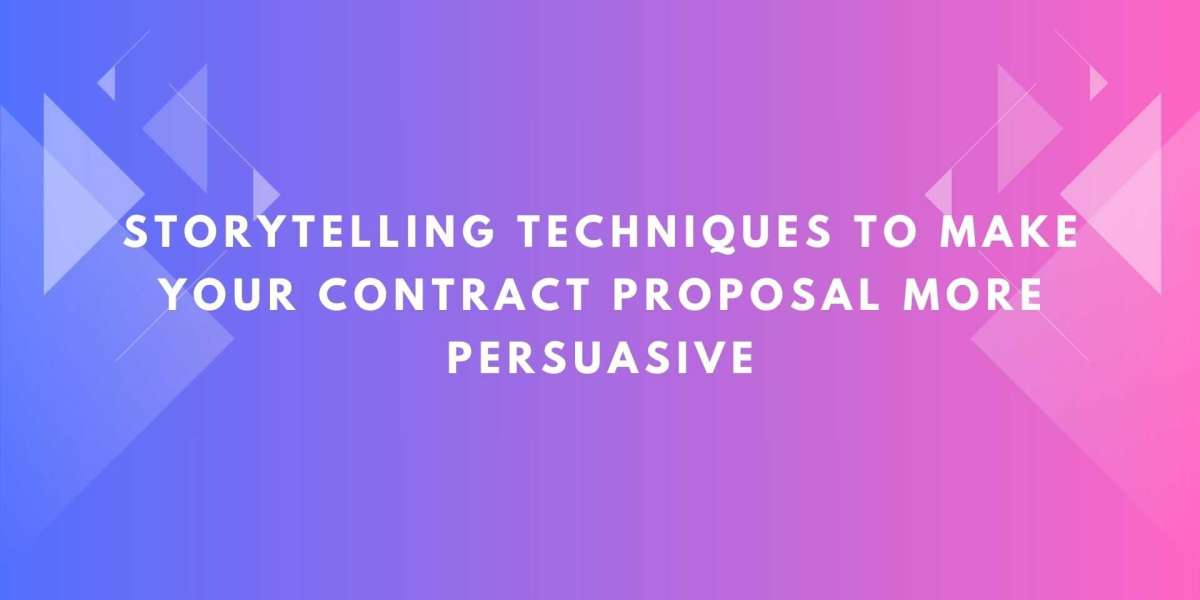When you think about a contract proposal, storytelling may not be the first thing that comes to mind. After all, a contract proposal is meant to define terms, protect your business, and outline responsibilities. But what if you could do all of that while also making your proposal more engaging, memorable, and persuasive? That is where storytelling comes in. By weaving narrative techniques into your contract proposal, you can capture your client’s attention, build emotional connection, and increase the likelihood of approval.
In this blog, we will explore how you can apply storytelling techniques to your contract proposal without sacrificing clarity or professionalism. These tips will help you create proposals that not only inform but also inspire.
Why Storytelling Works in a Contract Proposal
Storytelling is a powerful communication tool. It helps people make sense of complex information, remember key points, and feel emotionally invested in the outcome. When you incorporate storytelling into your contract proposal, you:
Make the proposal more relatable: Instead of dry terms, you frame your services as part of a journey that solves the client’s problem.
Showcase your understanding: Storytelling demonstrates that you truly understand the client’s needs, challenges, and goals.
Stand out: A narrative approach sets your contract proposal apart from standard, generic documents that clients may find boring or hard to engage with.
Storytelling Techniques for a Persuasive Contract Proposal
Here are some effective storytelling techniques you can apply to your contract proposal to make it more persuasive.
1. Start with the Client’s Challenge
Open your contract proposal with a short description of the client’s current situation or challenge. This sets the stage for your solution. For example:
You want to attract more qualified leads through digital marketing, but your current strategy is not delivering the results you need. We understand how frustrating that can be, especially when you have ambitious growth targets.
By starting with the client’s pain point, you immediately show empathy and relevance.
2. Position Your Solution as the Hero
In every great story, there is a hero who overcomes obstacles. In your contract proposal, position your service or solution as the hero that helps the client succeed. For example:
Our digital marketing package is designed to help you reach your target audience more effectively, generate high quality leads, and achieve measurable growth within six months.
This frames your offering as the key to the client’s success.
3. Use a Narrative Flow
Instead of jumping straight into terms and conditions, structure your contract proposal like a journey:
The challenge (what the client is facing)
The plan (your proposed solution)
The transformation (the outcome your service will deliver)
This format helps the client see the bigger picture and understand how your proposal fits into their story.
4. Include Mini Case Studies or Examples
Sprinkle in short, real-world examples of how you have helped similar clients. This adds credibility and makes your proposal more persuasive. For example:
When we worked with ABC Retail, they faced similar challenges in generating online sales. Our strategy helped them increase conversions by 40 percent within three months.
These mini success stories show that your solution works.
5. Focus on the Future Outcome
Clients want to know what their world will look like after they say yes. Paint a picture of the positive change they can expect. For example:
By the end of this project, you will have a fully optimized website that attracts more visitors, engages users, and drives more sales — helping you meet your revenue goals faster.
This forward-looking language inspires action.
6. Use Visuals to Support Your Story
Storytelling is not just about words. Charts, timelines, or diagrams can help illustrate the client’s journey, the steps you will take, and the results they can expect. A simple visual can make your contract proposal easier to digest and more persuasive.
7. End with a Call to Action
Every good story has a resolution. In your contract proposal, end with a clear next step. For example:
We are excited about the opportunity to help you achieve these results. Please review the proposal details, and let us know if you have any questions. We look forward to your approval so we can begin this journey together.
A friendly, confident close reinforces the value of your proposal and encourages action.
Balancing Storytelling and Formality
It is important to remember that while storytelling makes your contract proposal more persuasive, it must still be clear, professional, and legally sound. Here are some tips for balancing narrative style with formality:
Use storytelling techniques in the introduction, executive summary, and service descriptions.
Keep the legal terms, payment details, and conditions clear and precise.
Avoid overpromising in your narrative — stay honest and realistic about what you can deliver.
Use a friendly but respectful tone that matches your brand and industry.
Example of a Storytelling Approach in a Contract Proposal
Here’s a simple comparison:
Standard style:
We will provide website design services including homepage, about page, and contact page. The cost is $4,000. Timeline is eight weeks.
Storytelling style:
Your new website will serve as the digital face of your business — a place where visitors feel welcomed, informed, and ready to connect. Our design will reflect your brand’s values, with a clean homepage, engaging about page, and easy to use contact form. In just eight weeks, you will have a site that helps turn visitors into customers. The total investment is $4,000.
The second version tells a story of transformation, making the proposal more persuasive.
Conclusion
A contract proposal does not have to be a dry, legalistic document. By using storytelling techniques, you can turn it into a persuasive tool that connects with clients, builds trust, and increases the chance of approval. Focus on the client’s journey, frame your solution as the hero, and highlight the positive outcomes they can expect. The result will be proposals that not only inform but also inspire action.
If you would like, I can help you draft a contract proposal template that blends storytelling with clear, professional terms. Let me know!







